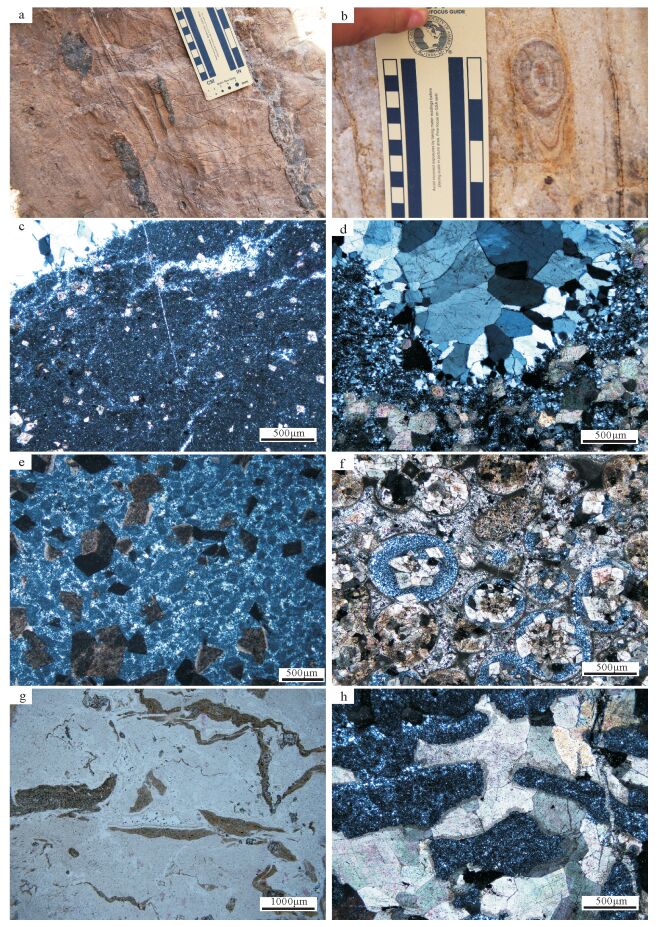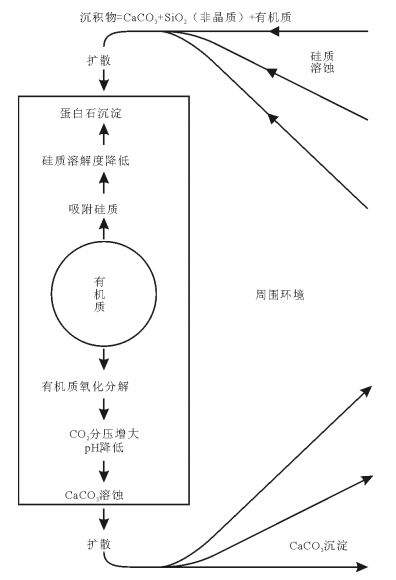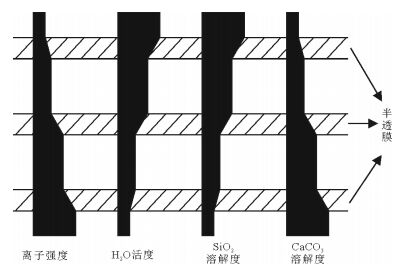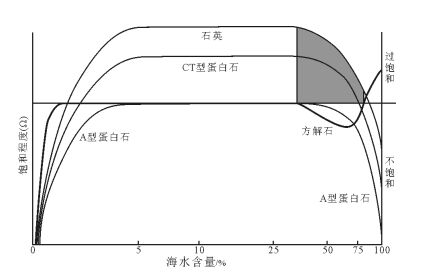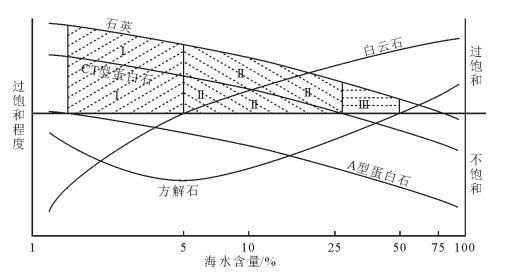Several genetic models of nodular chert hosted in Phanerozoic carbonate
-
摘要:
显生宙以来,碳酸盐岩地层中有燧石结核产出的现象十分普遍。现有研究认为,硅质生物壳体是燧石结核最主要的硅质来源,随着地质历史上主要硅质生物类型的演变,燧石结核的产出环境逐渐从浅水变为深水。不同地区不同层位的燧石结核往往具有一些共同特征,包括呈孤立分散的结核状产出、硅质选择性交代方解石颗粒而保留晶形完好的白云石、硅质矿物具有隐晶硅质-微晶石英-粗晶石英的规律性变化等。基于上述主要特征及不同研究实例的特点,前人总结出了有机质氧化模式、半透膜模式、混合水硅化模式、重结晶应力控制交代模式等燧石结核成因模式,从不同角度对燧石结核的典型特征进行了解释。然而由于燧石结核成因的复杂性及其可形成于沉积-成岩的不同阶段,各个成因模式均存在一定的局限性,只可用于解释部分地质特征。鉴于燧石结核对研究区的沉积环境、成岩历史等具有很好的指示作用,对其成因的研究具有重要意义,尽管上述模式的提出时间较早,但针对特定问题的研究非常深入,在以后的研究中应加以借鉴。
Abstract:Carbonate-hosted nodular chert is very common in Phanerozoic strata. Siliceous organisms are the main source of silica for the chert. The sedimentary environment of chert evolved from shallow water to deep water with the evolution of main siliceous organism spices during the geological history. Some typical characteristics exist among nodular cherts in different districts and different ages. The nodular chert usually exists in isolation and dispersion. The authors could observe from the thin section that the calcite grains are replaced selectively and the dolomite crystals are still euhedral. The siliceous minerals exhibit regular change from crypto-crystalline to microcrystalline and finally to macrocrystalline form. Based on the typical characteristics and specific phenomena of the research area, four main genetic models are proposed by different researchers, which are Organic Matter Oxidation Model, Semiper-meable Membrane Model, Mixing Zone Model and Force of Crystallization Controlled Replacement Model. However, due to the complexity of the genesis and various possibilities of formation stage during the sedimentary and diagenetic history, those models all have some limitations and can only explain the characteristics partially. Since the nodular chert can indicate the sedimentary environ-ment and diagenetic history well, the research on its origin is meaningful. Although these models have been proposed for decades, they still have reference value in the future because of the careful and profound thinking.
-
Key words:
- Phanerozoic /
- carbonate /
- nodular chert /
- genetic model
-

-
图 1 不同地质历史时期硅质的产出类型[15]
Figure 1.
图 2 碳酸盐岩中燧石结核形成的有机质氧化模式[4]
Figure 2.
图 3 碳酸盐岩中燧石结核形成的半透膜模式[4]
Figure 3.
图 4 混合水硅化模式中方解石、硅质饱和程度的关系曲线[12]
Figure 4.
表 1 近10亿年不同时代早成岩阶段燧石分布环境的变化特征[18]
Table 1. Summary of the broad facies distribution of early diagenetic chert through the past 1000Ma
演化阶段 沉积环境 盆地及深海 潮下陆棚和台地 环潮坪环境 第一阶段 新元古代 ? 有产出 大量产出 第一转变期 寒武纪—奥陶纪过渡期 第二阶段 志留纪—早白垩世 大量产出 大量产出 不常见 第二转变期 晚白垩世—古近纪过渡期 第三阶段 始新世至今 大量产出 不常见 不常见 -
[1] Hesse R. Silica diagenesis:origin of inorganic and replacement cherts[J]. Earth-Science Reviews, 1989, 26(1/3):253-284. https://www.sciencedirect.com/science/article/pii/001282528990024X
[2] August Goldstein J R. Cherts and Novaculites of Ouachita Facies[J]. SEPM Special Publications, 1959:135-149. http://sp.sepmonline.org/content/sepspsil/1/SEC9.body.pdf
[3] Bissell H J. Silica in Sediments of the Upper Paleozoic of the Cordil-leran Area[J]. SEPM Special Publications, 1959:150-185. http://sp.sepmonline.org/content/sepspsil/1/SEC10.short
[4] Siever R. Silica Solubility, 0°~200℃ and the Diagenesis of Siliceous Sediments[J]. Journal of Geology, 1962, 70(2):127-150. doi: 10.1086/626804
[5] Siever R. The silica budget in the sedimentary cycle[J]. The Ameri-can Mineralogist, 1957, 42:821-841. http://linkinghub.elsevier.com/retrieve/pii/S0031018215005751
[6] Hesse R. Origin of chert:Diagenesis of biogenic siliceous sediments[J]. Geoscience Canada, 1988, 15(3):171-192. http://www.sciencedirect.com/science/article/pii/B9780444530004000093
[7] Tréguer P, Nelson D M, Van Bennekom A J, et al. The silica bal-ance in the world ocean:a reestimate[J]. Science, 1995, 268(5209):375-379. doi: 10.1126/science.268.5209.375
[8] Tréguer P J, De La Rocha C L. The world ocean silica cycle[J]. An-nual Review of Marine Science, 2013, 5(5):477-501. http://www.researchgate.net/profile/Paul_Treguer/publication/229324719_The_World_Ocean_Silica_Cycle/links/551ad3c60cf2bb7540785a2f.pdf
[9] Kastner M, Keene J B, Gieskes J M. Diagenesis of siliceous oozes-Ⅰ. Chemical controls on the rate of opal-A to opal-CT transforma-tion-an experimental study[J]. Geochimica Et CosmochimicaActa, 1977, 41(8):1041-1051, 1053-1059. doi: 10.1016/0016-7037(77)90099-0
[10] Williams L A, Parks G A, Crerar D A. Silica diagenesis; I, Solubility controls[J]. Journal of Sedimentary Research, 1985, 55(3):301-311. http://archives.datapages.com/data/sepm/journals/v55-58/data/055/055003/0301.htm?q=%2BtextStrip%3Abiogenic+textStrip%3Agas+textStrip%3Aorigin+-isMeetingAbstract%3Amtgabsyes
[11] Bohrmann G, Abelmann A, Gersonde R, et al. Pure siliceous ooze, a diagenetic environment for early chert formation[J]. Geology, 1994, 22(3):207-210. doi: 10.1130/0091-7613(1994)022<0207:PSOADE>2.3.CO;2
[12] Knauth L P. A model for the origin of chert in limestone[J]. Geolo-gy, 1979, 7(6):274-277. doi: 10.1130/0091-7613(1979)7<274:AMFTOO>2.0.CO;2
[13] Clayton C J. The chemical environment of flint formation in Up-per Cretaceous chalks[M]//The scientific study of flint and chert. Cambridge:Cambridge University Press, 1986, 1:43-53.
[14] Maliva R G, Siever R. Nodular Chert Formation in Carbonate Rocks[J]. Journal of Geology, 1989, 97(4):421-433. doi: 10.1086/629320
[15] Knauth L P. Origin and diagenesis of cherts:An isotopic perspec-tive[M]. Isotopic Signatures and Sedimentary Records. Springer Berlin Heidelberg, 1992:123-152.
[16] Knoll A, Harper H E J. Silica, Diatoms, and Cenozoic Radiolarian Evolution[J]. Geology, 1975:175-177. http://geology.gsapubs.org/content/3/4/175.full.pdf
[17] Tobin K J. A survey of paleozoic microbial fossils in chert[J]. Sedi-mentary Geology, 2004, 168:97-107. doi: 10.1016/j.sedgeo.2004.03.006
[18] Maliva R G, Knoll A H, Siever R. Secular change in chert distribu-tion a reflection of evolving biological participation in the silica cy-cle[J]. Palaios, 1989:519-532. http://www.academia.edu/3304060/Radiolarian_palaeoecology_and_radiolarites_is_the_present_the_key_to_the_past
[19] Scholle P A, Ulmer-Scholle D S. A color guide to the petrography of carbonate rocks:grains, textures, porosity, diagenesis[M]. Aapg Memoir, 2005, 77(77):1-486.
[20] Emery K O, Rittenberg S C. Early Diagenesis of California Basin Sediments in Relation to Origin of Oil[J]. APG Bulletin American Association of Petroleum Geologists, 1952, 36(5):735-806. http://archives.datapages.com/data/bulletns/1949-52/data/pg/0036/0005/0700/0735.htm?q=%2BtextStrip%3Aseismic+textStrip%3Ainversion
[21] IlerR K, The colloid chemistry of silica and silicates[M].Ithaca, Cor-nell Univ. Press, 1955:1-324. http://files.eric.ed.gov/fulltext/ED127015.pdf
[22] Harned H S, Owen B B. Thephysical chemistry of electrolytic solu-tions[J].Journal of The Electrochemical Society, 1959, 106(1):3805-3806. http://pubs.acs.org/doi/pdf/10.1021/cen-v036n004a.p059
[23] Garrels R M. Mineral equilibria[J]. Soil Science, 1960, 90(2):146. http://www.minersoc.org/pages/Archive-MM/Volume_35/35-275-1024.pdf
[24] Greenberg S A, Price E W. The Solubility of Silica in Solutions of Electrolytes[J]. Journal of Physical Chemistry, 2002, 61(11):1539-1541. http://pubs.acs.org/doi/abs/10.1021/j150557a019
[25] De Sitter L U. Diagenesis of oil-field brines[J]. AAPG Bulletin, 1947, 31(11):2030-2040. http://archives.datapages.com/data/bulletns/1944-48/data/pg/0031/0011/2000/2030.htm?q=%2BtextStrip%3Acompressed+textStrip%3Asensing
[26] McKelvey J G, Milne I H. The flow of salt solutions through com-pacted clay[J]. Clays and clay minerals, 1962, 9:248-259. http://www.sciencedirect.com/science/article/pii/B9781483198422500171
[27] Siever R, Garrels R M, Kanwisher J, et al. Interstitial Waters of Re-cent Marine Muds Off Cape Cod.[J]. Science, 1961, 134(3485):1071-1072. doi: 10.1126/science.134.3485.1071
[28] Badiozamani K. The doragdolomitization model-application to the Middle Ordovician of Wisconsin[J]. Jour. sediment. petrol., 1973, 43(4):965-984. http://jsedres.sepmonline.org/content/43/4/965.short
[29] 迪安.兰氏化学手册[M].北京:科学出版社, 1991:117-123.
-



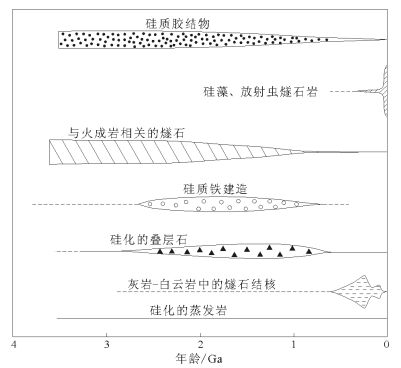
 下载:
下载:
